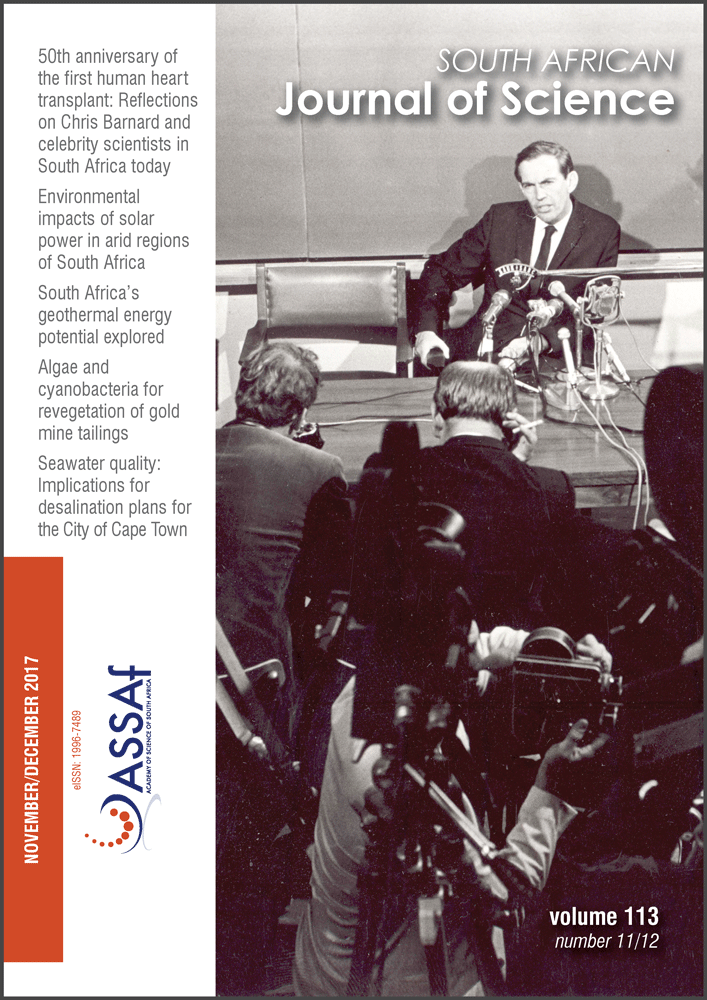Growth of soil algae and cyanobacteria on gold mine tailings material
DOI:
https://doi.org/10.17159/sajs.2017/20160384Keywords:
revegetation, biological soil crusts, cyanobacteria, tailings storage facilities, scanning electron microscopyAbstract
The goal of revegetation of gold mine tailings storage facilities is to reduce aeolian pollution, nutrient leaching and erosion caused by exposure to wind and water. The establishment of biological soil crusts may prove to be a more cost-effective way to reach the same goal and the aim of this study was therefore to determine if it is possible to establish algae and cyanobacteria on gold mine tailings. Different treatments of Chlamydomonas, Microcoleus and Nostoc were inoculated on gold mine tailings in controlled conditions and algal growth was measured on all of the treatments after 6 weeks. Nostoc treatments had the highest chlorophyll-a concentrations and produced a surface crust, while Chlamydomonas treatments penetrated the tailings material and provided the strongest crust. The results were promising but more research is necessary to determine the best organism, or combination of organisms, to colonise mine tailings and to eventually produce biological crusts.
Significance:- Determination of the best organisms to colonise mine tailings and to produce biological crusts for the revegetation of gold mine tailings storage facilities.
Published
Issue
Section
License

All articles are published under a Creative Commons Attribution 4.0 International Licence
Copyright is retained by the authors. Readers are welcome to reproduce, share and adapt the content without permission provided the source is attributed.
Disclaimer: The publisher and editors accept no responsibility for statements made by the authors
How to Cite
- Abstract 960
- PDF 935
- EPUB 259
- XML 315












.png)